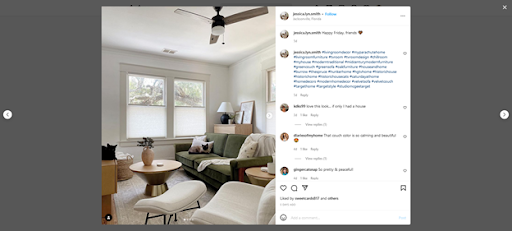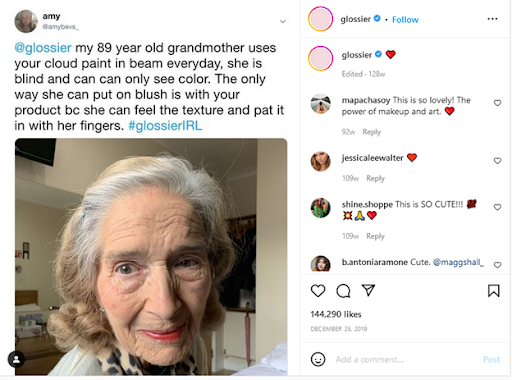User-generated content (UGC) is one of the most influential trends in affiliate marketing. It’s no surprise that more and more affiliates are starting to use UGC, as it can be extremely valuable in driving traffic, building trust, and generating leads.
This article promises four key benefits that UGC can offer affiliate marketers. But that’s not all you can find here.
How Does Affiliate Marketing Work?
Affiliate marketing is a bit like dating:
There are many different ways to do it, and what works for one person might not work for another.
But at its core, affiliate marketing is all about building relationships. You find a business with a product or service that you think your audience will love, and then you promote it to them. If they end up buying it, you get a commission.
It’s a pretty simple concept, but there’s a lot of room for interpretation.
For example, some affiliates prefer to build a relationship with the businesses they work with, while others focus on building a relationship with their audience. There are also different ways to promote products; some people use promotional codes or discounts, while others write blog posts or create videos.
But much like in dating, user-generated content makes you shoppers fall in love with your products the most. Let’s see why:
What Is UGC?
If you’ve ever used the internet, you’ve probably come across user-generated content (UGC). This content is created by users rather than professional marketers or publishers. And while UGC can take many forms – from photos and videos to reviews and blog posts – it’s increasingly being used by brands to promote their products and drive traffic to their website.
That brings us to the following section:
How Does UGC Make Affiliate Marketing Work Better?
From creating a community to contests and using New York influencers, the world of UGC is your oyster. Now you need the right tools to open that oyster.
You’re on the right page because the section below takes you through several examples of leveraging UGC, explaining strategies and mindsets.
1. Increased Traffic
There’s no question that user-generated content (UGC) is having a moment. Whether it’s a funny meme, an adorable cat video, or a heartfelt post about a personal experience, UGC is being shared more than ever before.
That brings more traffic to your website.
Parachute’s #MyParachuteHome is an excellent example because the company’s retargeting ads use real people’s homes. Therefore, these ads exude authenticity.

The hashtag helps contour a community and encourages shoppers to produce their own UGC in the hopes of being featured on these retargeting ads.
The campaign’s results speak for themselves:
- 35% higher click-through rate
- 60% lower cost-per-click
Lessons learned:
Here’s how you can make your UGC more appealing and, therefore, more shareable:
- Make it more relatable than traditional marketing content. Make it feel less like an advertisement and more like a conversation between friends. UGC often provides a sense of authenticity that can be lacking in other forms of marketing. When shoppers see that other real people are using and enjoying a product, they’re more likely to try it.
- Make it useful. Studies show that people share the content they find helpful for themselves and others, but also to define themselves.
- Use hashtags. Hashtags are useful because they help you keep track of the content created around your brand. But hashtags harness the power of names; that means they can define a community of people who use (and love) your products.
2. Improved Trust
Affiliate marketing can be tricky because many consumers don’t trust bloggers or websites promoting products. However, user-generated content comes with a built-in level of trust because it’s seen as coming from a real person rather than a faceless entity.
Take this example, for instance:

In December 2019, Amy posted on Instagram a photo of her almost-blind grandmother using Glossier’s cloud paint. Her 89 yo grandma can only use Glossier blush because its texture allows her to pat the product with her fingers. Therefore, she can apply her own make-up to look her best, gorgeous self.
Amy isn’t the only Glossier customer posting about the brand.
Glossier created the #glossierIRL campaign to give people a voice. And that voice praises Glossier products, thus making them more likely to be bought.
Lessons learned:
- Ensure your products are top-notch and that they cater to your customers’ real-life needs.
- Remember to give your campaign a memorable hashtag.
- Reward your customers with the recognition they deserve. Share their posts and mention them by name or even try to DM them.
3. Greater Engagement
User-generated content is also more likely to be engaged with than traditional marketing materials because it’s more authentic and relatable. Also, you can address poignant issues through UGC, or you can disclose more about your personality and values.
Studies show that people want to matter. Young people especially (think Gen Z and Millennials) want to make a difference. Therefore, they’re more likely to share content that’s not superficial.
Other research shows that people want to see companies getting involved and giving back to society.
The #WEAREALLHUMANITY campaign harnessed these needs. Citizens of Humanity donated $10 to a refugee agency for every photo that people posted using this hashtag, thus getting more recognition and traffic.
Besides, Citizens of Humanity reinforced its beliefs and helped contour a community of like-minded people who care about their peers.
$10 per post is a measly price for all these advantages, especially considering that Citizens of Humanity generates $56.85 million in sales.
Lessons learned:
- Give people a chance to contribute to a higher cause, but also:
- Contribute to that higher purpose yourself.
4. More Leads
UGC can generate more leads because it can help you reach a wider audience. And as we all know, the more people you reach, the more leads you’re likely to generate.
But those people are also more likely to buy your products because they’re qualified leads. Here’s why:
- UGC is more authentic than other forms of marketing, making it more trustworthy and persuasive. 84% of people are as likely to believe a positive review from a stranger as they are to trust a friend’s recommendation.
- UGC often comes from people who are already customers or fans of the brand. Therefore, they’re more likely to be interested in what the company has to offer and be closer to making a purchase.
Monsoon offers an interesting case study with its #MyMonsoon campaign, during which it encouraged shoppers to post pictures of themselves wearing Monsoon outfits. The company then made on-site galleries using those images, thus offering increased recognition to its contributors.
The campaign focused on existing customers, which research shows they’re the cheapest to target and bring the most sales.
Besides, Monsoon made that content shoppable, so people could easily buy the products they liked.
Thanks to its lengthy videos explaining how the app works, Mogo offers another practical example. Charismatic Carter Sullivan does a great job at popularizing the finance app to a young, risk-averse Gen Z – people who want to take control over their finances, ensuring their peace of mind.
Lessons learned:
- Focus on getting quality leads, not just more visits to your website.
- Make sure people understand how to use your product.
- Be genuine.
- Ensure people can purchase your products fast, so include links to product pages.
How to Get UGC for Your Affiliate Marketing Program?
One way to encourage user-generated content is to offer incentives, such as discounts or exclusive content. Therefore, users will be more likely to share your content and help you promote your products.
You can also encourage shoppers to share their own photos and videos or create contests and giveaways. The more fun and engaging your content is, the more likely people are to share it.
Using influencers is another practical strategy.
These content creators have more insights into your audience, so they can help you create better-selling, engaging content that doesn’t look promotional. Besides, people look up to them for advice because they identify with these influencers.
Of course, you need to make sure the end result looks more like UGC and less like a paid ad.
Although user-generated content sounds like your users are doing the entire job, that’s not the case. You have to do your research, concoct plans and budgets, gauge strategies, and employ the best analytics tools to measure results.
So, if you want to encourage UGC, make sure you have a solid campaign first.
But that’s a discussion for another time.
The post 4 Benefits of User-Generated Content for Affiliate Marketing appeared first on SiteProNews.


0 Commentaires